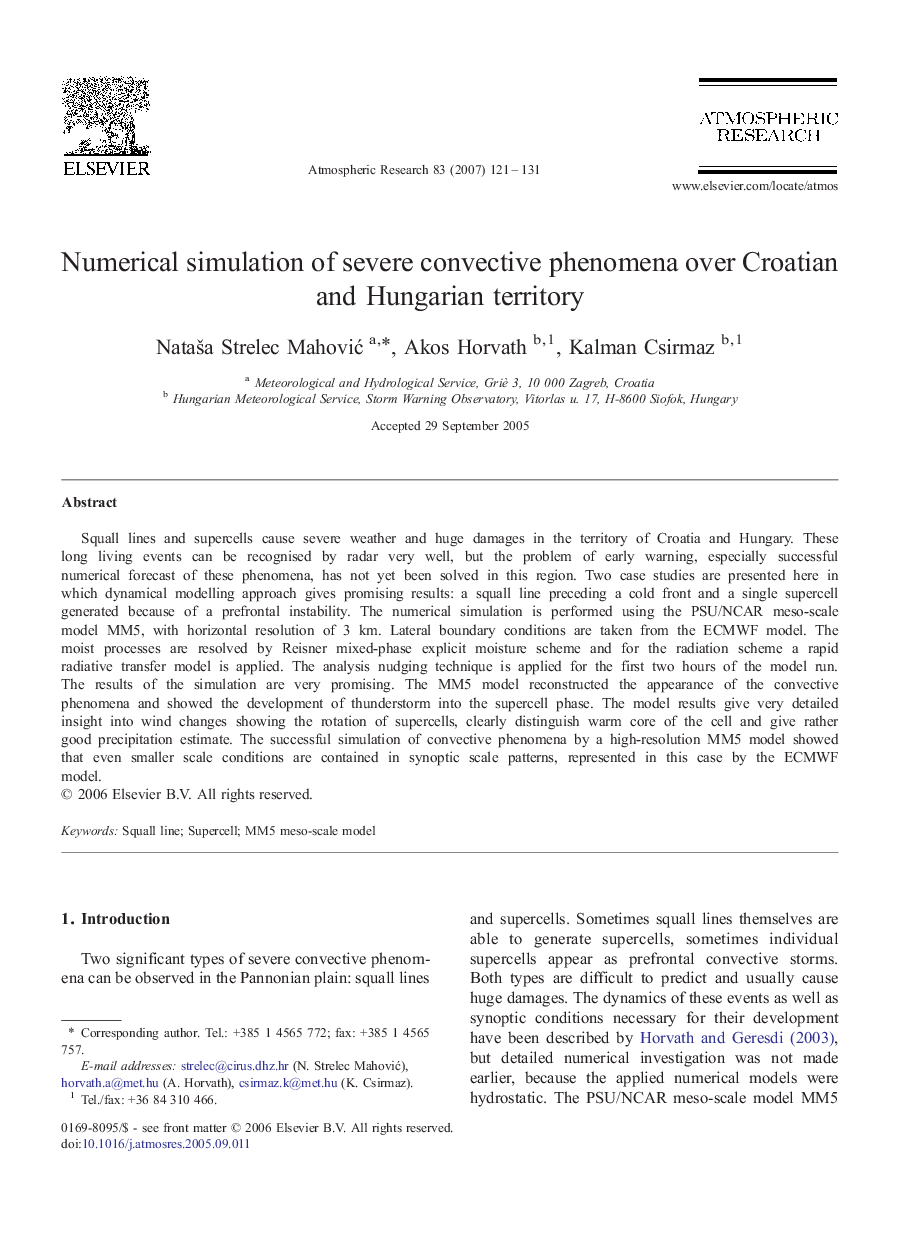| Article ID | Journal | Published Year | Pages | File Type |
|---|---|---|---|---|
| 4451318 | Atmospheric Research | 2007 | 11 Pages |
Squall lines and supercells cause severe weather and huge damages in the territory of Croatia and Hungary. These long living events can be recognised by radar very well, but the problem of early warning, especially successful numerical forecast of these phenomena, has not yet been solved in this region. Two case studies are presented here in which dynamical modelling approach gives promising results: a squall line preceding a cold front and a single supercell generated because of a prefrontal instability. The numerical simulation is performed using the PSU/NCAR meso-scale model MM5, with horizontal resolution of 3 km. Lateral boundary conditions are taken from the ECMWF model. The moist processes are resolved by Reisner mixed-phase explicit moisture scheme and for the radiation scheme a rapid radiative transfer model is applied. The analysis nudging technique is applied for the first two hours of the model run. The results of the simulation are very promising. The MM5 model reconstructed the appearance of the convective phenomena and showed the development of thunderstorm into the supercell phase. The model results give very detailed insight into wind changes showing the rotation of supercells, clearly distinguish warm core of the cell and give rather good precipitation estimate. The successful simulation of convective phenomena by a high-resolution MM5 model showed that even smaller scale conditions are contained in synoptic scale patterns, represented in this case by the ECMWF model.
